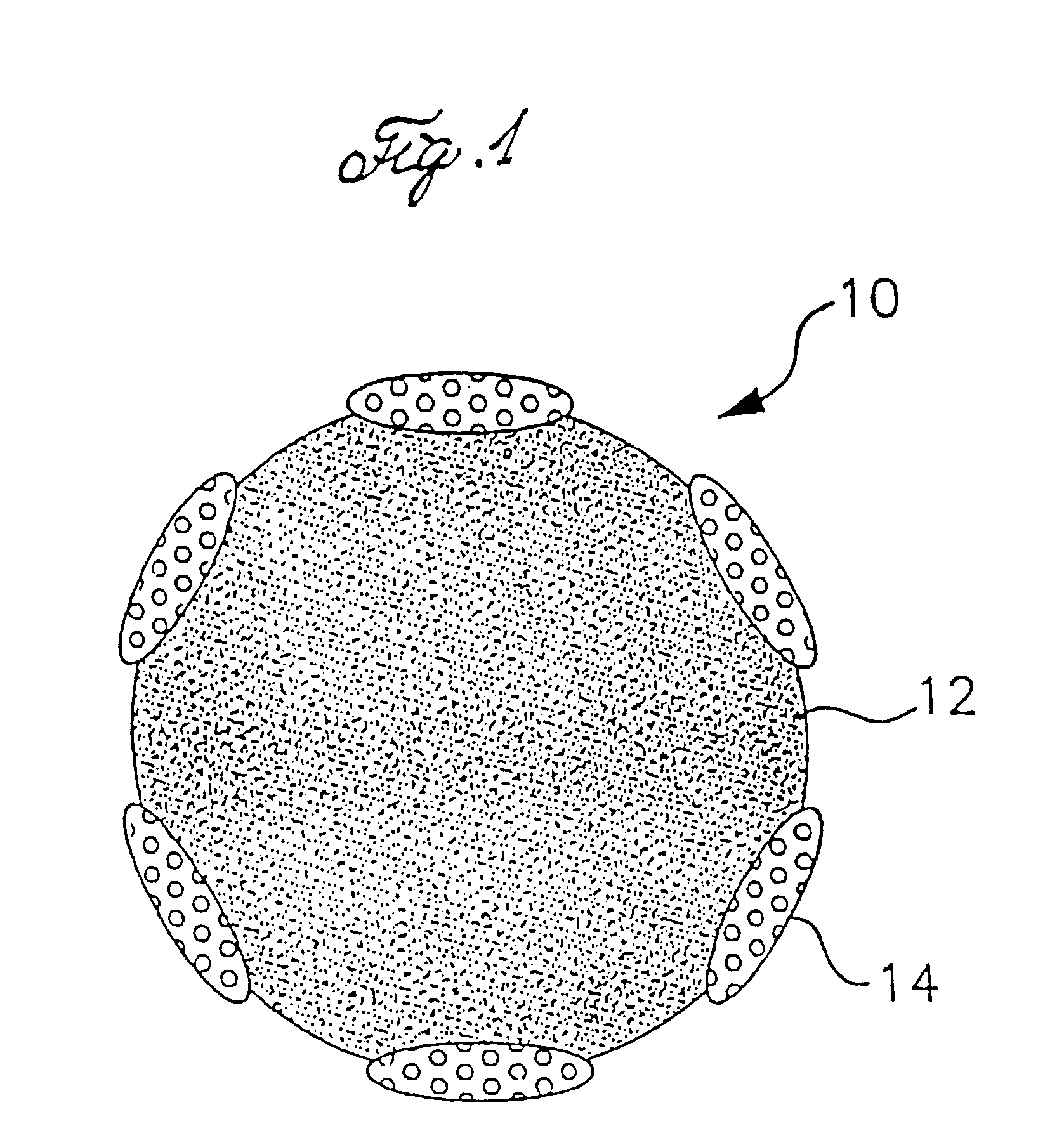Polymer powders, pressure sensitive adhesives and methods of making the same
- Summary
- Abstract
- Description
- Claims
- Application Information
AI Technical Summary
Benefits of technology
Problems solved by technology
Method used
Image
Examples
example 1
Preparation of Poly 2-Hydroxyethyl Methacrylate in Ethanol
[0253]
Reactor Charge2-Hydroxyethyl Methacrylate (Mitsubishi)540gramsEthanol1080gramsBenzoyl peroxide2.7gramsCook-Off initiator #1Ethanol60grams2,2′-azobis(2,4-dimethylpentanenitrile)*1.4gramsCook-Off initiator #2Ethanol60grams2,2′-azobis(2,4-dimethylpentanenitrile)*1.4gramsCook-Off initiator #3Ethanol60grams2,2′-azobis(2,4-dimethylpentanenitrile)*1.4grams*VAZO ®52 (2,2′-azobis(2,4-dimethylpentanenitrile) (Dupont; Wilmington, Delaware)
Procedure
[0254]1. The Reactor Charge was weighed out into a flask and poured into a reaction kettle with mixing, and was heated with an 80° C. jacket and a N2 purge kettle.[0255]2. The Cook-Off initiator #1 (Ethanol and VAZO®52) was weighed into a small beaker and mixed until the solids dissolved.[0256]3. Three and one-half hours after the addition of the Reactor Charge, Cook-Off initiator #1 was added to the kettle.[0257]4. The Cook-Off initiator #2 (Ethanol and VAZO®52) ...
example 9
Preparation of Poly 2-Hydroxyethyl Methacrylate in Methanol
[0275]
Reactor Charge2-Hydroxyethyl Methacrylate (Mitsubishi)300gramsMethanol700gramsAIBN (2,2′-azobis(isobutyronitrile)1.5gramsCook-Off initiatorMethanol15gramsAIBN (2,2′-azobis(isobutyronitrile)0.75grams
Procedure
[0276]1. The Reactor Charge was weighed out into a flask and poured into a reaction kettle with mixing, and was heated with an 65° C. jacket and a N2 purge kettle.[0277]2. The Cook-Off initiator (Methanol and AIBN) was weighed into a small beaker and mixed until the solids dissolved.[0278]3. Six hours after adding the Reactor Charge the Cook-Off initiator was added.[0279]4. Four hours after adding the Cook Off initiator, the kettle contents were cooled and discharged.
The polymeric product synthesized in Example No. 9, above, exhibited the following properties:
[0280]Appearance: clear to light-yellow gel-free liquid
[0281]Solids: 36.7%
[0282]Viscosity: 39,000 cPs
[0283]Residual monomer: HEMA, 0.78%...
example 13
Preparation of HEMA / Methacrylic Acid Copolymer in Water
Recipe (1200 g Batch)
[0292]
Reactor ChargeDeionized Water400.00gInitiator ChargeDeionized Water100.00gSodium Persulfate1.5gMonomer Feed2-Hydroxyethyl Methacrylate270.0gMethacrylic Acid30.00gDeionized Water300.00gAmmonium Hydroxide (30%)12.3gCook-Off Initiator #1Deionized Water50.0gSodium Persulfate0.75gCook-Off Initiator #2Deionized Water50.0gSodium Persulfate0.75g
Procedure
[0293]1. The Reactor Charge was weighed out into a flask and poured into a reaction kettle.[0294]2. The Reactor Charge was heated with an 80° C. jacket and a N2 purge kettle.[0295]3. The Monomer Feed (2-hydroxyethyl methacrylate, methacrylic acid, deionized water) was weighed into a feed jar, then ammonium hydroxide was added with mixing to adjust the pH to about 5.5.[0296]4. The Initiator Charge (sodium persulfate and deionized water) was weighed out into a small beaker and mixed until the solid dissolved.[0297]5. The Initiator Charge was poured into the react...
PUM
| Property | Measurement | Unit |
|---|---|---|
| Fraction | aaaaa | aaaaa |
| Percent by mass | aaaaa | aaaaa |
| Percent by mass | aaaaa | aaaaa |
Abstract
Description
Claims
Application Information
 Login to View More
Login to View More - R&D
- Intellectual Property
- Life Sciences
- Materials
- Tech Scout
- Unparalleled Data Quality
- Higher Quality Content
- 60% Fewer Hallucinations
Browse by: Latest US Patents, China's latest patents, Technical Efficacy Thesaurus, Application Domain, Technology Topic, Popular Technical Reports.
© 2025 PatSnap. All rights reserved.Legal|Privacy policy|Modern Slavery Act Transparency Statement|Sitemap|About US| Contact US: help@patsnap.com


